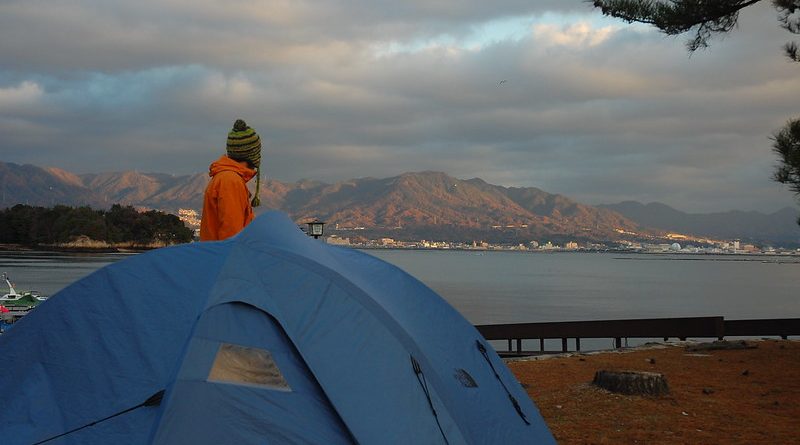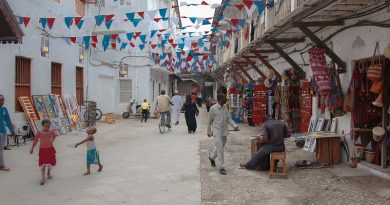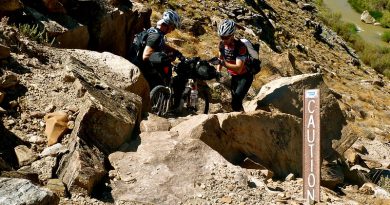Hidden Japan: Tohuku
Tohoku in North Eastern Honshu, is a spectacular land that evokes the spirit, traditions and wonders of Japan. It reveals a beauty and culture little known to the outside World.
There are some timeless themes in Tohoku that make it what it is – a genuine window into the soul of Japan.
North eastern Honshu (called the Tohoku District) does not have the famous temples, shrines, gardens, and castles of Southern Japan, but it does have spectacular mountain scenery, national parks, hot springs in abundance, excellent ski resorts, and many hiking trails.
Its rugged, mountainous terrain, coupled with cold, snowy winters, has also helped preserve the region’s traditions. You won’t find any of Tokyo’s edgy flashiness here, but rather a down-to-earth practicality, warm hospitality, and a way of life that harks back generations.
Tohoku consists of six smaller regions or prefectures: Akita, Aomori, Fukushima, Iwate, Miyagi and Yamagata. Tohoku literally means “northeast”, a reference to it’s location relative to the ancient capitals of Nara and Kyoto, with the Sea of Japan on the west coast and the Pacific Ocean to it’s east.
The Ocean has carved monumental rock pillars and dramatic arches along this rugged seacoast. The area around Jodogahama in Iwate near the entrance of Miyako Bay and Matsushima in Miyagi are particularly impressive and accessible, with numerous hiking trails and tour boats.
More than 20,000 hot springs, or onsens, dot Japan’s landscape, and the Tohoku region has more than it’s fair share. Sunsets over the Sea of Japan can be admired from the warmth of the Koganeski Furofushi Onsen in Aomori. The most famous hot spring areas in the region include Nyuto hot springs in Akita, Zao in Yamagata and Hachimantai in Iwate.
Tohoku is home to many matsuri, or festivals, such as the Iwate Snow Festival at Koiwai Farm, the region’s biggest snow festival, and the Namahage Sedo Festival in Oga in Akita prefecture.
“Time”, a concept that is often ignored in the modern pursuit for efficiency, is a value that still lives on with the making of things in the Tohoku region. The people toil steadily as they wait for the long hard winters to pass. They lead humble lives, close to nature, harvesting and preparing their materials with the changing seasons.
Islands:
On the southern edge of Matsusima, about an 8-minute walk from Matsushima Kaigan Station, is Oshima (also spelled Ojima), a small island once used as a retreat by priests. At one time, there used to be more than 100 hand-dug caves carved with scriptures, Buddhist images, and sutras, but today the Island and its remaining 50 caves and stone images are rather neglected. There’s no fee, there’s no gate, and the Island never closes. Connected to the mainland by bridge, it’s a nice quiet spot in which to sit and view the harbour; you can walk around the entire island in about 20 minutes. Because it was a Buddhist retreat, women were forbidden on the Island until after the Meiji Restoration in 1868.
Miyagi Matsushima – One of Japan’s three most beautiful sites:
Matsushima consists of numerous Islands scattered around the blue ocean, large and small, covered with pine trees. Matsushima has been loved for its beautiful scenery, and is one of Japan’s Three Scenic Points, together with Miyajima in Hiroshima and Ama-No-Hashidate in Kyoto. Matsushima is less than a one hour train ride from Sendai City in Miyagi Prefecture, the largest city in the Tohoku region.
Matsushima became well known in the early 17th century when Masamune Date, a famous feudal lord in the area, restored the Zuiganji Temple, which was originally constructed in the 9th century near Matsushima.
Iwate Wanko’s Soba eating-contest-style restaurants:
Buckwheat noodles (soba) are served up as a lively eating contest. This local favourite began almost four centuries ago as an efficient way to provide guests with “all-you-can-eat” noodles, and continues today as one of Iwate’s most famous food experiences. Count your bite-sized bowls as you down them, but beware! Slide the lid on your bowl quickly when you’re done, or one of the servers will slide you a new portion to eat.
Wanko Soba Noodles are served with various condiments, such as: tuna sashimi, nameko, mushrooms with a slightly gelatinous coating, simmered in soy sauce; daikon radish pickled in miso with crushed walnuts; harako, or salmon roe.
The Kotatsu Train:
A kotatsu is a low, wooden table frame covered by a futon, or heavy blanket, upon which a table top sits. Underneath is a heat source, often built into the table itself. Kotatsu are used almost exclusively in Japan, although similar devices are used elsewhere.
The Kotatsu train in IWATE prefecture runs twice a day until the end of March. On board, people can experience retro Japan with the beloved Kotatsu. Passengers are able to sit comfortably while enjoying the landscape and a special seafood bento/lunchbox & some Mikan (mini satsuma oranges). What an amazing idea!
Furthermore, Namahage make a boisterous appearance, surprising passengers.
Namahage is a Japanese ritual played in Tohoku (Northern Honshu) by young men dressed up as fierce demons who visit village houses on New Year’s Ever looking for newcomers (usually children, newlyweds) to work, study hard, and obey parents or in-laws. Other household members “protect” their relatives by assuring the Namahage that they are good people. The Namahage are then placated with some food and sake.
Thought many homes in Japan have become westernized, many Japanese still relax in the winter under Kotatsu, which helps keep the legs and feet toasty warm, even on the coldest of nights.
The special kotatsu Train started as a regular winter service in 2006, but the company did not operate the train one year, because operations were suspended in some sections due to damage inflicted on Iwate by the Great East Japan Earthquake and Tsunami in March 2011.
The company runs the Kotatsu train between Kuji Station and Tanohata Station on the North Rias line on one round trip daily on Saturdays, Sundays and public holidays, until the end of March.
Inakadate Tanbo Art – Giant art made in Japanese rice fields in Aomori:
By embracing their agricultural past, and adding a little 20thcentury technological know-how, Inakadate was able to create massive living art, made out of coloured rice stalks.
Called Tanbo (paddy) art, the designs are wondrous. Spanning entire fields, the rice paddy art takes 1200 people from the community and $35,000 to create. But the end result is an amazing multi-coloured design, stretching hundreds of feet and featuring incredible detail.
Top Crafts in Tokuru
*Akiu Craft Park: traditional lacquerware, wooden chests,kokesku dolls, edo spintops,toys, iron teapots, tea utensils, dyeing and weaving
*Ayala Museum: woodblock prints by Shiko Munakola, ketels by Keisuke Serizawa, ceramics by Shoji Harrada and Kanjiro Kawai
Destination – Japan




